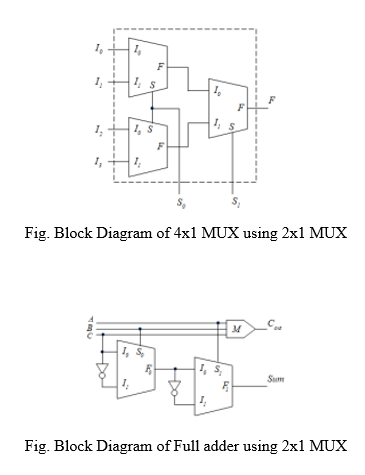Low-Power Multiplexer Structures Targeting Efficient QCA Nanotechnology Circuit Designs
Objective
The main aim of this paper is to implement mux architecture based on QCA in an efficient way and improve the performance of the design.
Abstract
In In this project, two different structures of 2 1 MUX designs are proposed using QCA cell QCA technology is considered to be a possible alternative for circuit design. implementation in terms of energy efficiency, integration density and switching which can replace CMOS implementations as nm technology decreases. Multiplexers (MUX) can be considered to be suitable candidates for designing QCA circuits.
The The proposed MUX outperforms the best existing design in terms of power consumption. with approximate reductions. Moreover, similar or better performance factors in Area and latency are achieved compared to the available designs. These MUX structures can be used as fundamental energy-efficient building blocks for replacing the majority-based structures in QCA. The scalability property of the The proposed MUX are excellent and can be used for energy-efficient complexes. QCA circuit designs. These implemented designs are simulated and waveforms are observed using the QCA designer tool.
Keywords: Quantum dot cellular automata (QCA), multiplexer, majority gate, electrons, CMOS. (complemented metal oxide semiconductor).
NOTE: Without the concern of our team, please don't submit to the college. This Abstract varies based on student requirements.
Block Diagram

Specifications
Software Requirements:
· QCA designer
Hardware Requirements:
· Microsoft® Windows XP
· Intel® Pentium® 4 processor or Pentium 4 equivalent with SSE support
· 512 MB RAM
· 100 MB of available disk space
Learning Outcomes
- The Basics of Digital Electronics
- VLSI Design Flow
- An Introduction to Quantum Dot Cellular automata (QCA)
- Creating designs in QCA The Designer tool
- Introduction to Combinational short circuits.
- knowledge of multiplexers.
- Applications in real time
- QCA Designer for design and simulation
- Solution providing for real time problem
- Project Development Skills:
o Problem Analysis Skills
o Problem Solving Skills
o Logical Skills
o Designing Skills
o Testing Skills
o Debugging Skills
o Presentation Skills
o Thesis Writing Skills





 Paper Publishing
Paper Publishing
